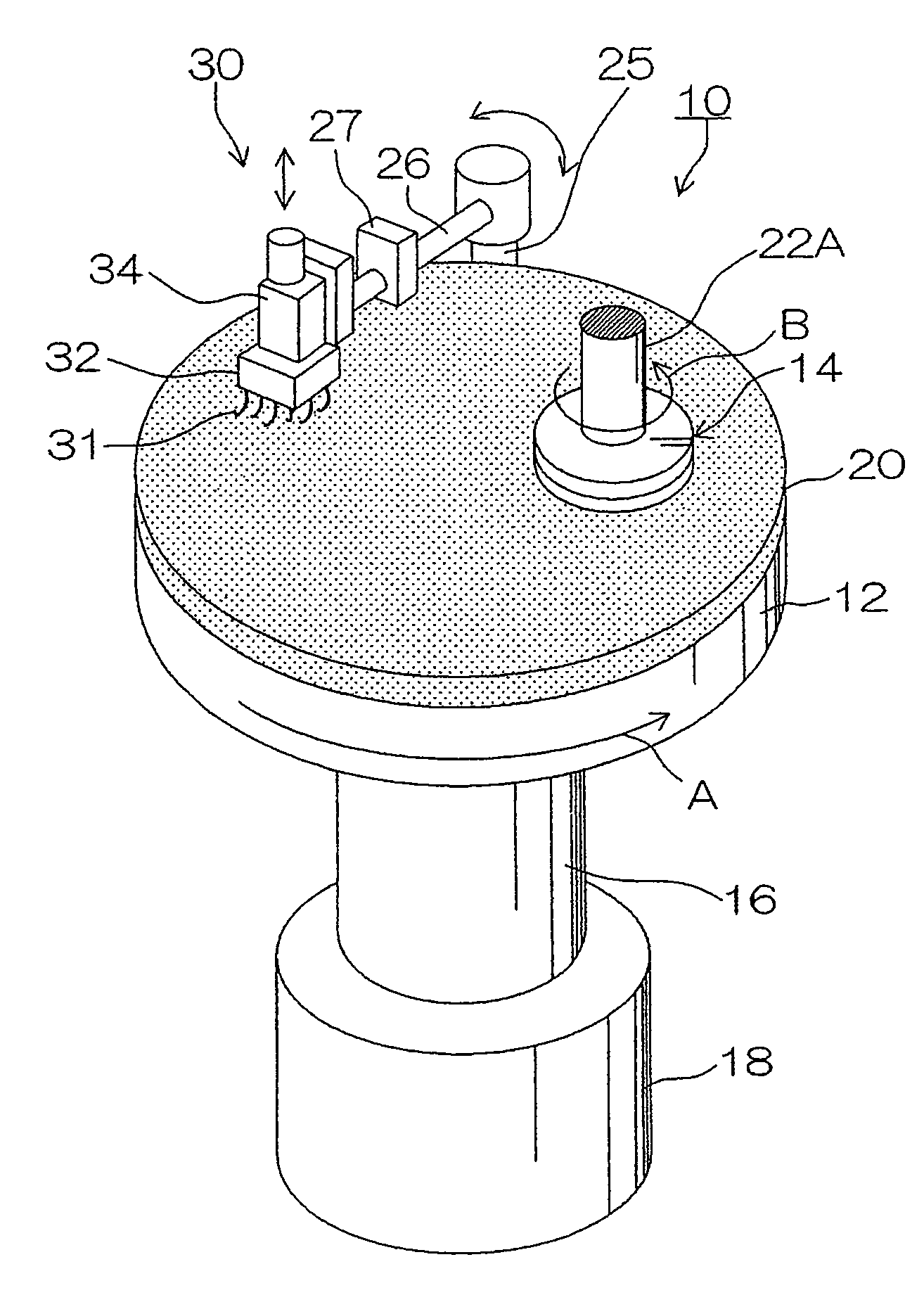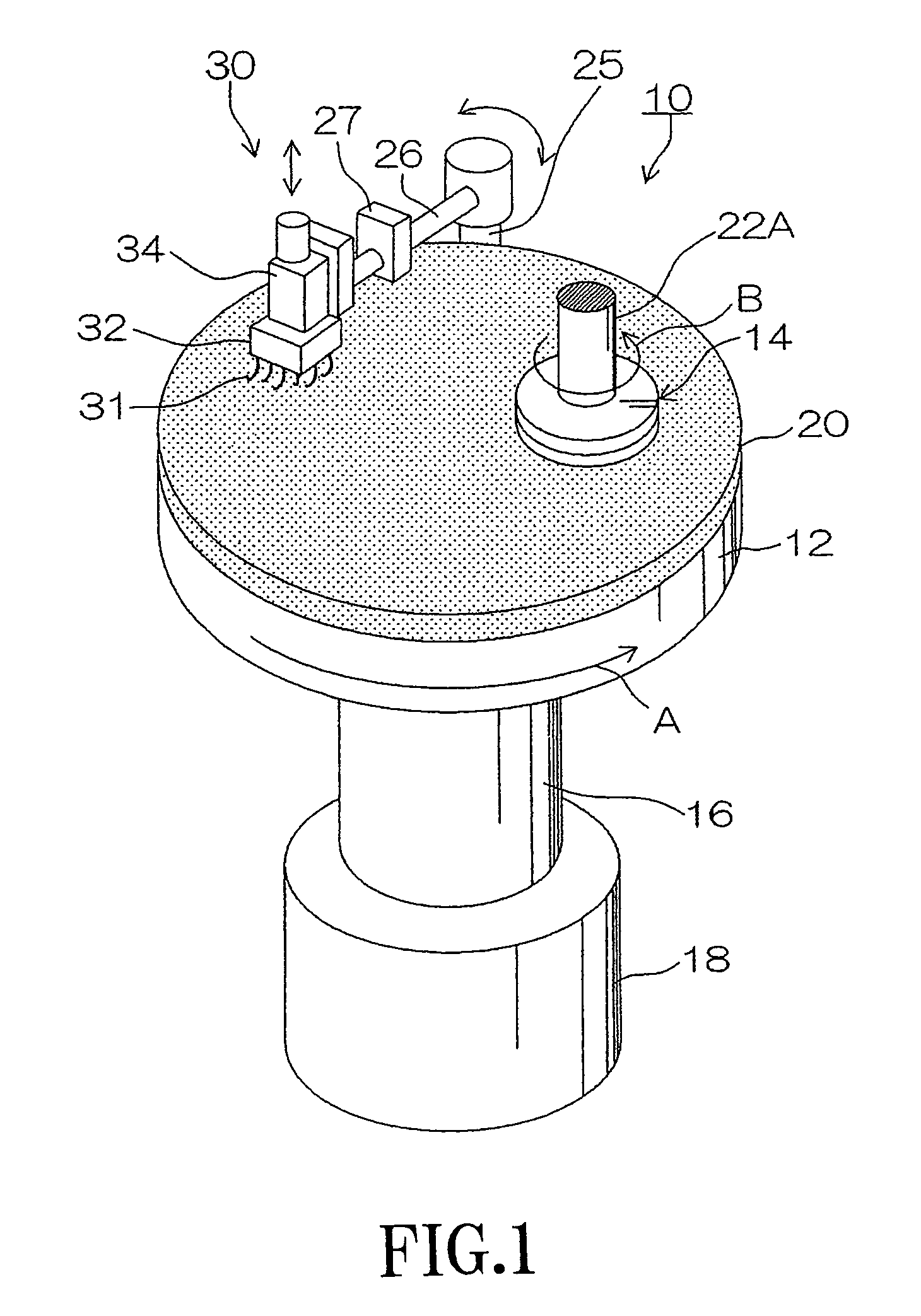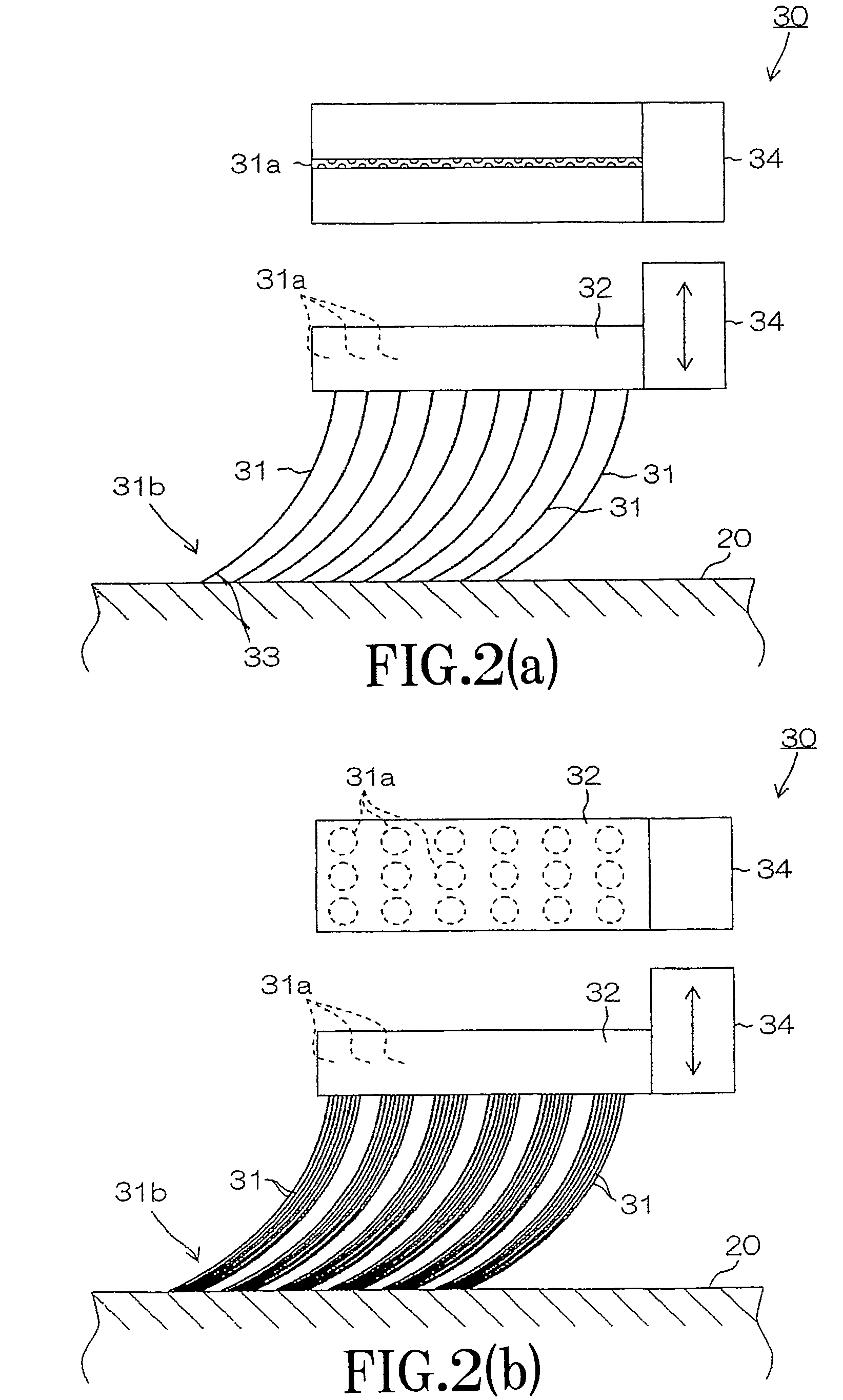Pad dresser, polishing device, and pad dressing method
a polishing device and pad dressing technology, applied in the direction of grinding drives, grinding drives, manufacturing tools, etc., can solve the problems of both sides being similarly worn out and decayed, the recovery rate of the removal rate is at most 31.4%, and the brush has no effect of cutting off the pad surface, etc., to achieve good polishing process and excellent uniform removal rate
- Summary
- Abstract
- Description
- Claims
- Application Information
AI Technical Summary
Benefits of technology
Problems solved by technology
Method used
Image
Examples
first embodiment
[0142]FIG. 9 is a conceptual diagram of a pad dresser according to the present invention. FIG. 9A is a side view and FIG. 9B is a cross sectional view. An end of elastic member 31 bundled by pencil band 35 is attached to a lower edge of support part 32. Elastic member 31 is composed with every 30 tungsten wires of 0.15 mm size and 25 mm length bundled in one bundle respectively. The tip part of each element wire of elastic member 31 is made to contact the surface of polishing pad 20 with a straight end without the abrasive grain attached, and perform dressing of polishing pad 20.
[0143]As shown in FIG. 9, while the wire size of the tip part of each element wire in elastic member 31 is made to be fine, and the cutting width on polishing pad 20 is made to be narrow, the rigidity of elastic member 31 is made to be high by bundling each element wire of elastic member 31 together by pencil band 35 and is made to produce a large pressure at the fine tip part of each element wire.
[0144]Elas...
third embodiment
[0157]FIG. 13 is a conceptual diagram of the pad dresser according to a second one of the present invention. As shown in FIG. 13, in order to enhance the rigidity, flexible wire rod 37 of the fine element wires is bundled and is inserted into flexible tube 38. By this, the deflection rigidity is enhanced by the outer circumference tube 38, and the tip of flexible wire rod 37 of the fine element wires operates on polishing pad 20 effectively. The fine element wires can be protected from scattered slurry for polishing, etc. with tube 38 of the outer circumference.
[0158]FIG. 14 is a conceptual diagram of the pad dresser according to a third one of the third embodiment of the present invention. FIG. 14A is a side view and FIG. 14B is a cross sectional view. As shown in FIG. 14, reinforcing member 36 is inserted in an inner part of flexible wire rod 37 of the fine element wires, and the rigidity can be enhanced. That is, fine flexible wire rod 37 is used as a cylinder, and reinforcing me...
PUM
| Property | Measurement | Unit |
|---|---|---|
| diameter | aaaaa | aaaaa |
| diameter | aaaaa | aaaaa |
| size | aaaaa | aaaaa |
Abstract
Description
Claims
Application Information
 Login to View More
Login to View More - R&D
- Intellectual Property
- Life Sciences
- Materials
- Tech Scout
- Unparalleled Data Quality
- Higher Quality Content
- 60% Fewer Hallucinations
Browse by: Latest US Patents, China's latest patents, Technical Efficacy Thesaurus, Application Domain, Technology Topic, Popular Technical Reports.
© 2025 PatSnap. All rights reserved.Legal|Privacy policy|Modern Slavery Act Transparency Statement|Sitemap|About US| Contact US: help@patsnap.com



